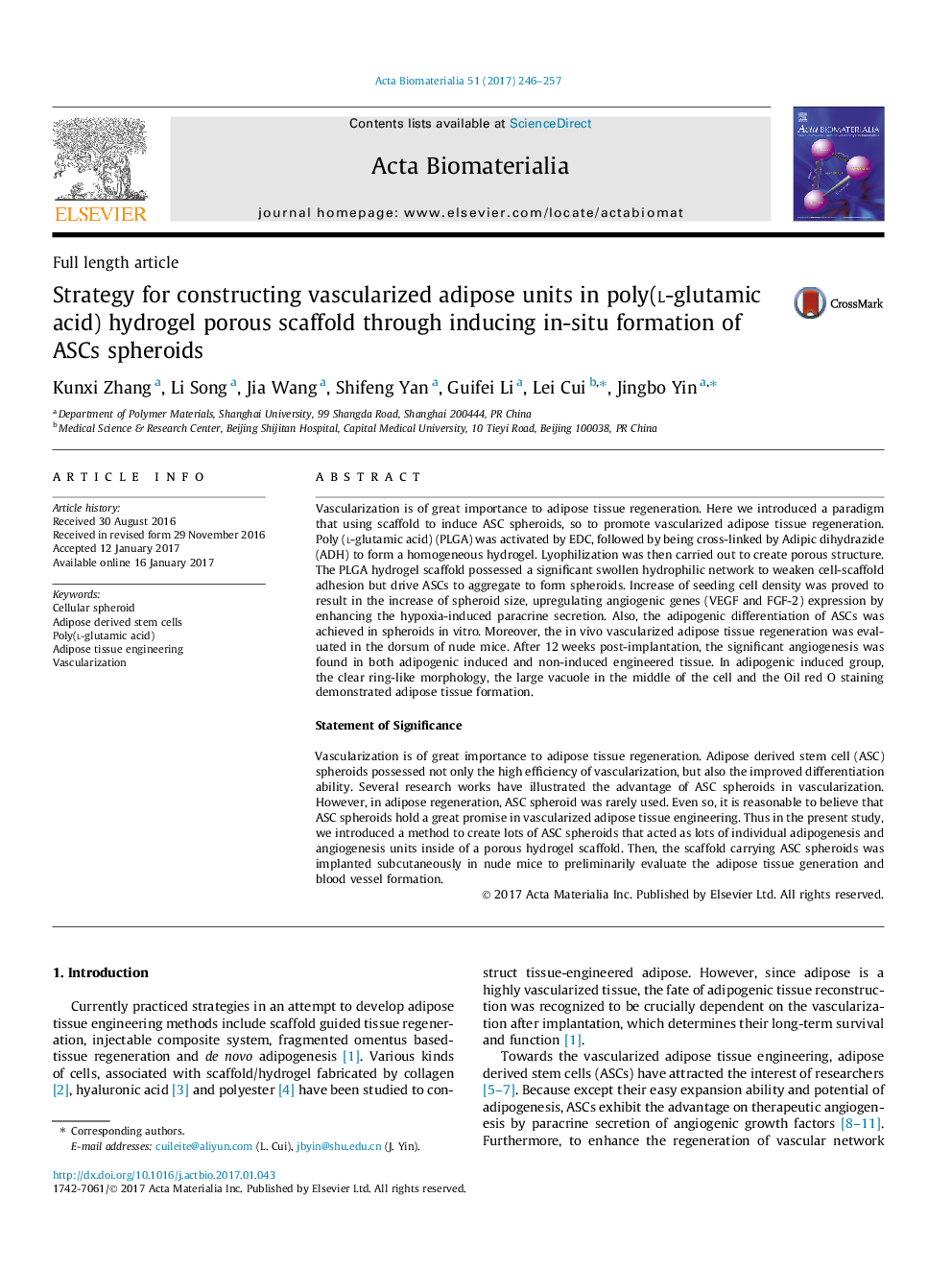| Article ID | Journal | Published Year | Pages | File Type |
|---|---|---|---|---|
| 6449482 | Acta Biomaterialia | 2017 | 12 Pages |
Vascularization is of great importance to adipose tissue regeneration. Here we introduced a paradigm that using scaffold to induce ASC spheroids, so to promote vascularized adipose tissue regeneration. Poly (l-glutamic acid) (PLGA) was activated by EDC, followed by being cross-linked by Adipic dihydrazide (ADH) to form a homogeneous hydrogel. Lyophilization was then carried out to create porous structure. The PLGA hydrogel scaffold possessed a significant swollen hydrophilic network to weaken cell-scaffold adhesion but drive ASCs to aggregate to form spheroids. Increase of seeding cell density was proved to result in the increase of spheroid size, upregulating angiogenic genes (VEGF and FGF-2) expression by enhancing the hypoxia-induced paracrine secretion. Also, the adipogenic differentiation of ASCs was achieved in spheroids in vitro. Moreover, the in vivo vascularized adipose tissue regeneration was evaluated in the dorsum of nude mice. After 12Â weeks post-implantation, the significant angiogenesis was found in both adipogenic induced and non-induced engineered tissue. In adipogenic induced group, the clear ring-like morphology, the large vacuole in the middle of the cell and the Oil red O staining demonstrated adipose tissue formation.Statement of SignificanceVascularization is of great importance to adipose tissue regeneration. Adipose derived stem cell (ASC) spheroids possessed not only the high efficiency of vascularization, but also the improved differentiation ability. Several research works have illustrated the advantage of ASC spheroids in vascularization. However, in adipose regeneration, ASC spheroid was rarely used. Even so, it is reasonable to believe that ASC spheroids hold a great promise in vascularized adipose tissue engineering. Thus in the present study, we introduced a method to create lots of ASC spheroids that acted as lots of individual adipogenesis and angiogenesis units inside of a porous hydrogel scaffold. Then, the scaffold carrying ASC spheroids was implanted subcutaneously in nude mice to preliminarily evaluate the adipose tissue generation and blood vessel formation.
Graphical abstractDownload high-res image (164KB)Download full-size image
